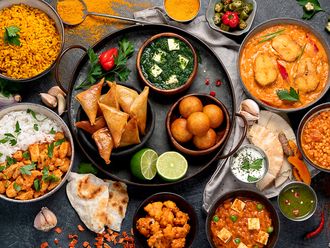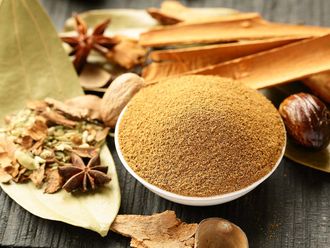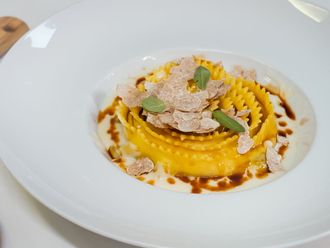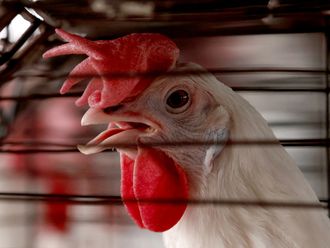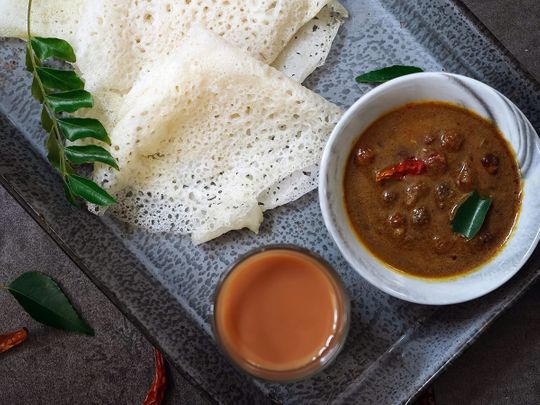
They’re aplenty. Every Emirate in the UAE will have restaurants that serve south Indian food, catering to the large Indian diaspora in the country.
In my last visit to one such restaurant in Al Nahda, Dubai, the menu was large, having more than a hundred options to choose from. After going through about half the menu, I settled on the classic masala dosa, the standard filter coffee and some idli for good measure. And then came the moment I saw it — Neer Dosa, a south Indian dish which belongs to the Tulu region in Karnataka. Many consider this a typical breakfast dish in Udipi and Mangalorean cuisine.
I realised what I had missed only when I started to learn more about how unfermented rice batter turns into supple, steamed crepes.

In the Tulu language, Neer means water and the dosa gets this name because the recipe uses plenty of water to make it thin and soft with a porous surface.
“In the Tulu language, Neer means water and the dosa gets this name because the recipe uses plenty of water to make it thin and soft with a porous surface,” explains Hazeena Seyad, a food blogger and an author based in Tamil Nadu, India.
Neer dosa is a beginner’s friend
If you’re like me and you struggle to make your crepes flat and round, then you’ll find hope for your culinary skills with neer dosa, which is rather shapeless when it’s done.
The ingredients are easy to source too and he preparation doesn’t need any special process other than soaking the rice.
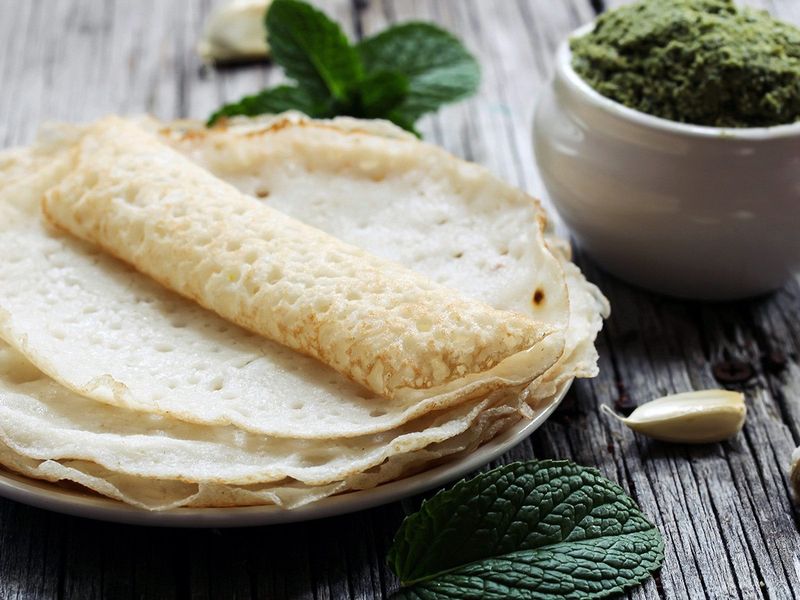
When it comes to making neer dosa, it requires some rice, the same type we use to make batter for idli or rice cakes. However, you don’t need to ferment it, Seyad explains.
“A good two hours of soaking the rice in water is a must. Then an addition of water and salt is what we need to make need dosas.”
Seyad shares a simple method to make neer dosa:
Soak idli rice for two hours in water.
Strain the water and grind the soaked rice to a very smooth paste adding little water.
Add water and salt to the ground rice paste. Mix well to get a runny batter.
While pouring the batter on a pan, don’t worry too much about the shape, quickly tilt the pan to a side to spread the batter.
Cover and cook for a two minutes.
You’ll know it’s done when the edges of the neer dosa begin to curl up.
When this happens, remove the Neer dosa from the pan, without flipping it on the other side. Serve hot.
The method and recipe reminds me of rava dosa, another south Indian delicacy, and an idea that has Seyad agreeing. She explains that other states in South India have similar looking crepes like neer dosa.
“The rava dosa from the south Indian states of Tamil Nadu and Telangana is quite similar to neer dosa. The kalakki sutta appam, which is also known as lace appam from Malapuram district in Kerala is similar too.
Neer dosa, rava dosa and kalakki sutta appam are all one of those quick dosas that don’t require fermentation. The difference between these crepes are the ingredients used and the way the batter is prepared.
“Neer dosa, rava dosa and kalakki sutta appam are all one of those quick dosas that don’t require fermentation. The difference between these crepes are the ingredients used and the way the batter is prepared,” Seyad explains.
“To make neer dosa, we use idli rice, salt and water. Rava dosa is made from rice flour, semolina, water, whole spices, onions and herbs. The kalakki sutta appam is made with rice flour, hot water, grated coconut and salt.”
"All these crepes are poured over a medium heated cast iron pan. To get the perfect dosa, I prefer a dedicated dosa or pancake pan, which comes with a non-stick coating.
“The neer dosa is one of the easiest of south Indian dishes to make. With its large size, soft texture and many variations you will find yourself making it time and again. If you have tried to order this dish from an Indian restaurant only to be disappointed, try making it at home. The results are well worth the effort.
"Some use a filling by adding grated coconut, carrot and some finely chopped coriander on one side of the neer dosa and then folding the other half over it. This can make the neer dosa a bit tricky to remove from the pan, especially if you’re just getting started with south Indian cuisine," Seyad explains.
An authentic way to eat
“The authentic Udupi and Mangalore way to enjoy the steamed rice crepe is to have it with a red flavourful chutney, called Kempu chutney that originates from the northern part of Karnataka. But you can serve it with any curry of choice as it pairs well with non-vegetarian and vegetarian curries,” Seyad explains.
Dubai-based Indian expat, Geeta Adyantaya, who is from Managalore says that she has been eating neer dosa for over 20 years now.

Neer dosa goes with many other Mangalorean dishes such as chicken sukha, chicken and mutton puli munchi, Mangalorean chicken and mutton curry.
“Neer dosa is a typical Mangalorean dish and it isn’t easy to avoid such a simple type of dosa. It is easy to make, and at the same time it is unique compared to other dosas in south India because it’s steamed and has few ingredients. Neer dosa goes with many other Mangalorean dishes such as chicken sukha, chicken and mutton puli munchi, Mangalorean chicken and mutton curry.
“Other than chutney, I consider these as the best and most authentic combinations with neer dosa. However, like most Mangalorean people, I enjoy it the most when I make these soft rice crepes at home. Homemade recipes taste much better than the dosas you find in a restaurant,” she adds.
Share your favourite breakfast recipe with us at food@gulfnews.com



